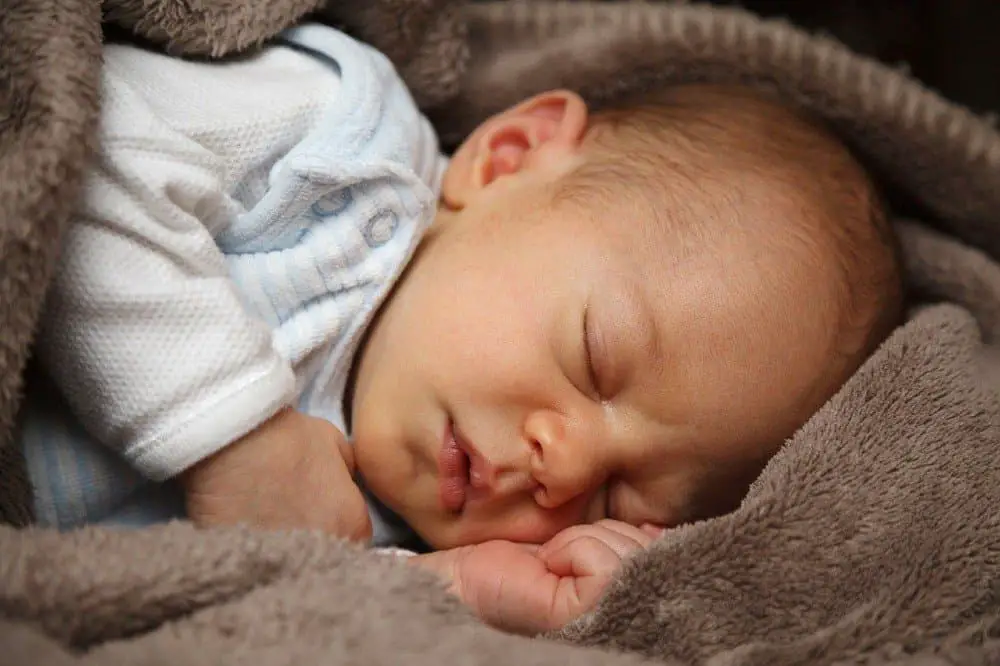Are you tired of changing diapers at night? Do you wish you could sleep through the night without any disturbance?
I have been wondering how to get a good night’s sleep and have been doing a lot of research and also talking to other Moms.
Thing is, you are not keen to use reusable diapers as they are bad for the environment and also may not agree with your baby.
However, since most cloth diapers need to be changed every 2 to 3 hours, you need something better to get you through the night and help you to get a good night’s sleep.
This is where Overnight Cloth diapers can help you.
But before we get to that, let me give you are brief introduction of the different types of diapers available.
There are two main types – reusable and disposable.
Hey! By the way… any links on this page that lead to products on Amazon are affiliate links and I earn a commission if you make a purchase.
Thanks in advance – I really appreciate it!
Table of Contents
- Reusable Diapers
- Disposable Diapers
- Biodegradable disposable diapers
- What are natural diapers?
- Are cloth diapers organic and non-toxic?
- What are fitted diapers?
- Are cloth diapers better for overnight use?
- What is the best cloth diaper for overnight use?
- How often should you change cloth diapers at night?
- How long can you leave a cloth diaper on?
- Conclusion
Reusable Diapers
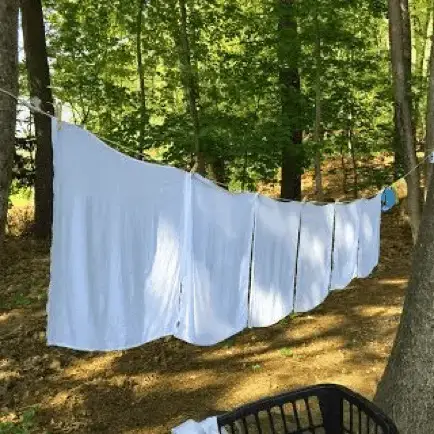
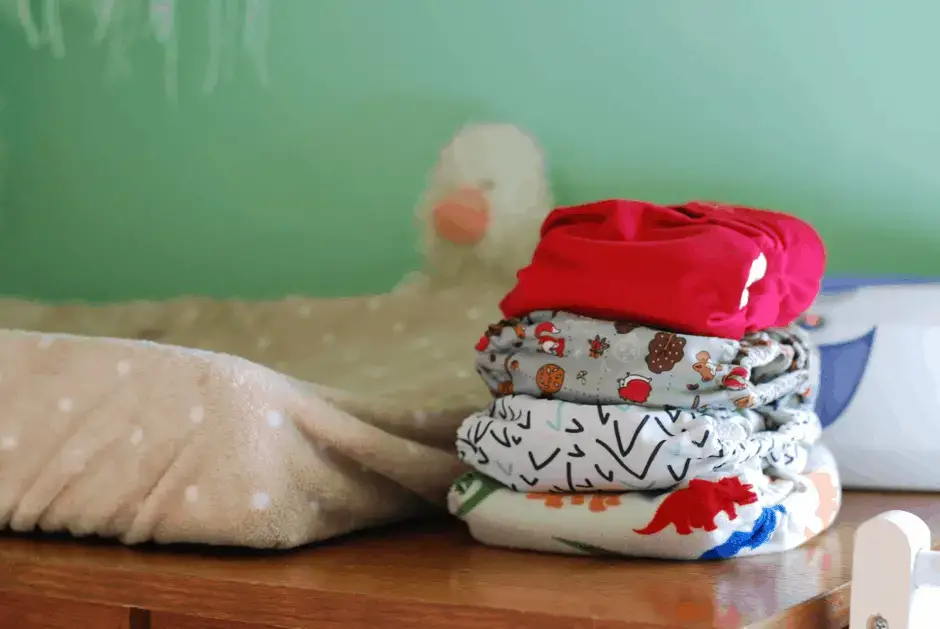
Reusable ones can be used again and again. You simply wash them after each use and wait for them to dry. There are four kinds of the reusable type .
Old-fashioned cloth squares
There are different ways to fold onto a baby. The diaper is fastened with pins. Because they are made from cloth they are not waterproof, so you need to use a waterproof cover over the diaper. Traditionally cloth squares were made of cotton (terry or flannelette), but these days you can find cloth squares made of bamboo and hemp.
Here is a collection of some square cloth diapers that you can buy
All-in-ones
All-in-one reusable diapers resemble disposables in design. They are easy to put on, and come with inserts sewn into a waterproof cover. With some brands the inserts can flap open when washing and drying. Combined with thin fabric this makes for a reusable diaper that dries quickly which is very handy, especially in cold and wet weather.
Here are some All-in-ones which are selected by our readers
All-in-twos or ‘snap-in-ones’
These cloth nappies have a reusable shell with inserts that can be replaced. So when your baby needs to be changed, you simply remove the insert and that’s all you have to wash, not the whole diaper. The insert is easy and quick to remove and of course, it dries in a jiffy.
Our readers have suggested the following All-in-twos
Pocket diapers
- Super-absorbent and Comfortable Cloth Nappies / Diapers, Which Are...
- Outer Layer: Polyester with Waterproof and Breathable TPU .It's...
- Our Reusable Cloth Diapers Are Designed for Families Who Require...
- Package included: 6 diapers + 12 inserts.
- 1 Year Guarantee. If You Have Any Problems with The Product, Please...
Last update on 2024-07-27 / Affiliate links / Images from Amazon Product Advertising API
These have a waterproof pocket into which you stuff the absorbent part of a nappy. You can use a liner and or an insert and or a booster to insert. The more layers you insert, the more absorbent it will be. It’s best to experiment to see what works best for your baby or toddler.
With the convenience of disposable diapers at your fingertips, why would anyone use reusable ones?
Two reasons: to save money and to be kind to the environment.
The convenience of disposable nappies comes at a considerable environmental cost. Most nappies end up in vast landfills where they pollute the environment for years. Many parents would rather not add to this heap of toxic waste. Think about it, nappies can take more than 500 years to degrade in landfills.
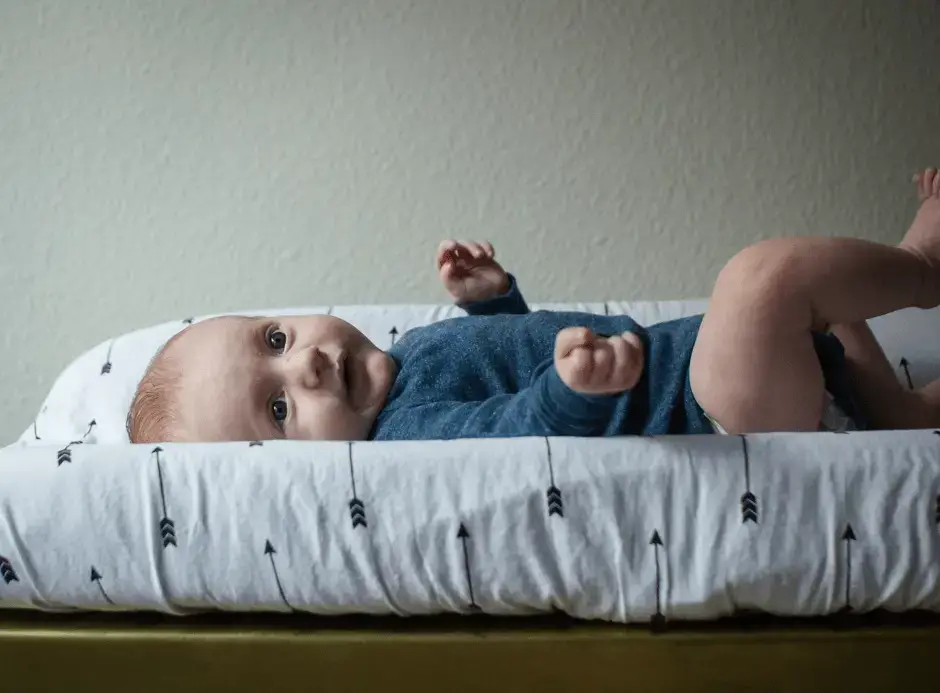
The effect of reusable nappies on the environment
Reusable nappies also have a negative impact on the environment. Washing a dozen cloth nappies at 90 degrees uses loads of energy chasing up your electricity bills. If you don’t hang your cloth nappies out to dry in the sun, or if you are forced to use a tumble dryer due to weather conditions, you add to your carbon footprint. For washing the nappies, an energy-efficient washing machine will help you save on electricity.
Disposable Diapers
They generally consist of a plastic outer layer, a layer of super-absorbent, polymers, polypropylene and an inner liner. They also feature adhesives and elastics all of which are not biodegradable.
When buying disposable ones, consider your baby’s soft, sensitive skin. It might develop a rash or an allergic reaction to the chemicals present. These toxic chemicals include dioxins, the absorbent chemical sodium polycarbonate and tributyl-tin (TBT).
Disposable ones are very easy and convenient to use and come in all shapes and sizes. They are very popular with the majority of parents.
As per popular recommendations of our readers, you will find some good disposable diapers here
Biodegradable disposable diapers
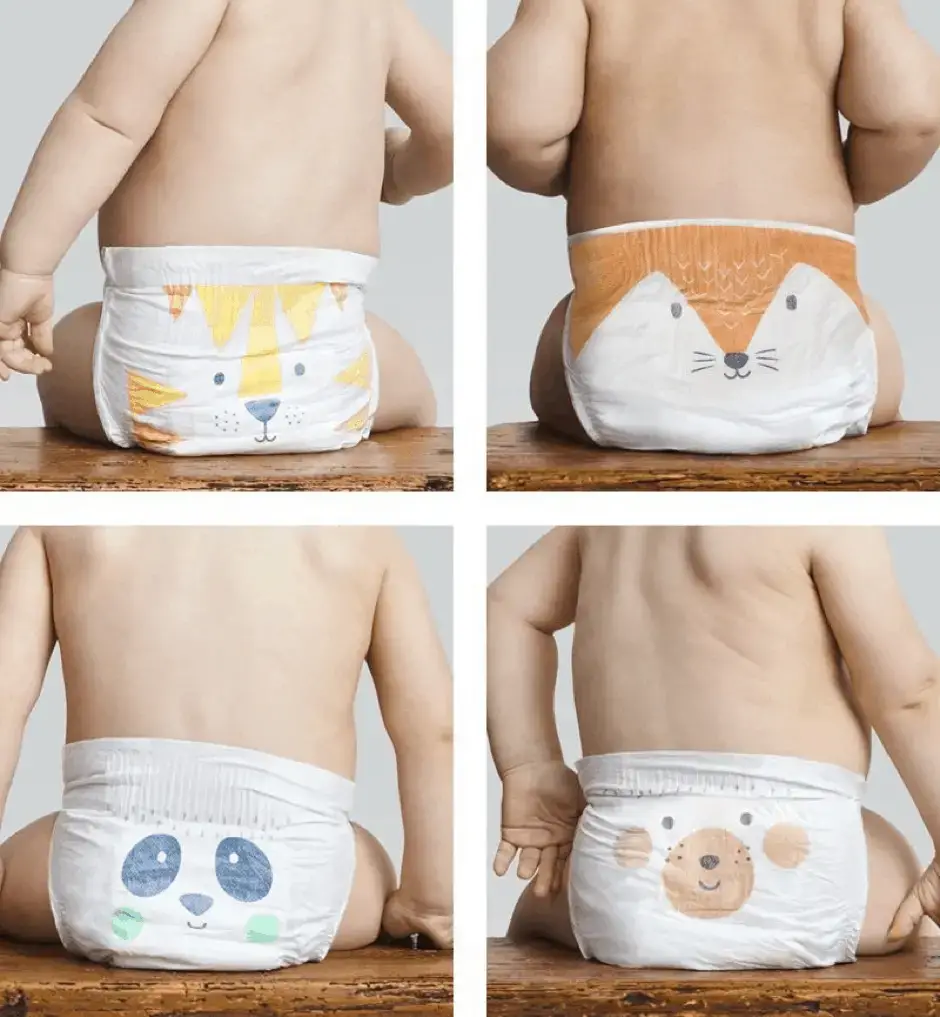
Here are some popular ones that we recommend.
Biodegradable disposable diapers use natural materials like bamboo, fabrics and paper pulp instead of chemicals as an absorption method. These decompose and break down completely over time.
They are a better choice for the environment, but their environmental friendliness comes at a price. They tend to be more expensive than non-biodegradable disposables.
If you don’t want to or don’t have the time to wash diapers every day, then environmentally-friendly disposable ones made with natural materials are the next best option.
What are natural diapers?
Eco-friendly diapers made from natural organic materials like bamboo are sometimes referred to as natural diapers. Andy Pandy and Bamboo Naturals are examples of natural diapers.
Are cloth diapers organic and non-toxic?
You may think that all cloth diapers are organic and non-toxic, but that’s not so.
Nappies made from conventionally grown cotton fabrics contain traces of pesticides, chemicals and synthetic fertilizers. Cotton is a crop that attracts a wide range of insects that need to be treated with pesticides. Farmers also use fungicides and synthetic fertilizers when growing cotton. In addition, when the cotton is woven into fabric, it’s treated with bleach to whiten it.
So, conventional cotton diapers are actually not so natural, and are toxic.
On the other hand, it’s possible to lay your hands on cloth diapers that are manufactured from organically grown cotton. There are also cloth diapers made from organically grown hemp and bamboo.
What are fitted diapers?
Fitted diapers have fitted elastic legs and waistbands that makes the diaper look like a short. They provide a snug fit and excellent protection against all manner of leaks.
Small fitted diapers are ideal for newborns who tend to have frequent runny stomach issues that create nasty messes. They usually fasten easily with snaps or Velcro. If you decide to use cloth fitted diapers, remember you need waterproof outer covers for them.
Are cloth diapers better for overnight use?
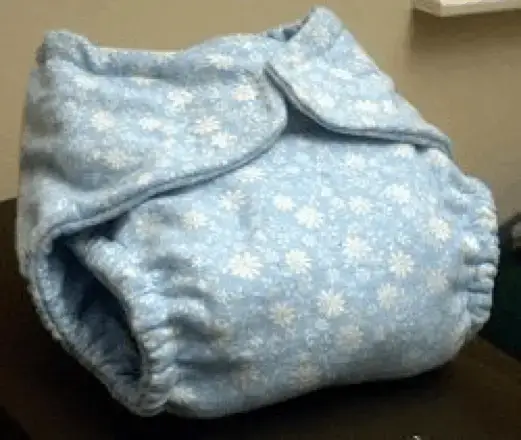
Image via Pinterest
Most cloth diapers need to be changed every 2 to 3 hours. So they are not suitable for night use as you can’t get a good night’s sleep. However, there are some cloth diapers that are specially made for overnight use.
These diapers have advanced leak protection, a secure and comfortable fit and are made of sustainable materials. No chlorine and bleach processing are used in the manufacturing. They are super absorbent but they don’t come in newborn size, only sizes three to six.
What is the best cloth diaper for overnight use?
- Double-layer & leak-proof : maximum leak protection. Ultra soft bamboo...
- Sewn Inside Absorbent Pad and Dark Gray Lining: No matter how the baby...
- More comfortable diapers: We have added more snaps to adjust the size,...
- 4 Pack Set with Wet Bag: Your baby can wear cloth diapers of different...
- Why Choose Our Cloth Diapers: This diaper can be REUSED and WASHED....
Last update on 2024-07-27 / Affiliate links / Images from Amazon Product Advertising API
Asenappy is a fitted reusable cloth nappy made from microfiber fabric for extra softness. The nappy features pockets for inserts so you can customize the diaper absorbency for your heavy wetter or for over-night use.It has a All in one size design with snap buttons to adjust sizes from Small to Large.
PROS
- Very good fit
- Beautiful style
- No diaper cover required
- Soft polar fleece rayon material keeps baby’s skin dry and comfortable
- Pocket opening for additional cloth diaper inserts
- Snap buttons adjust size to small, medium or large.
- Fits babies from approximately 10 lbs to 30 lbs
CONS
- Extra inserts needed for proper absorbency
- Extra inserts are sold separately
- 55% Hemp / 45% Cotton
- Imported
- Uninterrupted Nights: Embrace the ultimate in comfort and...
- Gentle Comfort: Experience the softness and hypoallergenic properties...
- Peaceful Nights: Elevate your nighttime routine with the EcoAble Hemp...
Last update on 2024-07-27 / Affiliate links / Images from Amazon Product Advertising API
This is also a great choice as hemp is super absorbent. It comes in one size with two cotton hemp Inserts. The nappies are 55% hemp and 45% cotton. They are marketed as a leak-free night-time solution for your baby. Especially for heavy wetters there are removable snap-in hemp insert soakers to maximize absorbency.
An added bonus of nappies made of hemp is the fact that hemp has antibacterial properties so its use prevents diaper rashes.
PROS
- Least expensive option
- Doesn’t require a cover (It’s part of the diaper)
- Very absorbent
- No prep necessary
- Two closure options: Velcro or Snaps
CONS
- May require an additional insert for heavy wetter
- Contains synthetic materials
No products found.
The greatest advantage of the GroVia O.N.E. is the fact that it comes with its own cover attached, so you don’t have to buy one extra.
This diaper is super absorbent, so you don’t need boosters of doublers at night. There is no prepping required, so you can use the diaper immediately. They have two closure options: snap closures or Velcro. The Modular Snap In Soaker System means you can customize it to use it from birth to potty learning. It fits babies from 10 to 35+ lbs.
The GroVia O.N.Eis made of soft materials including 100% Polyester Microfiber, 100% Cotton topped with 100% Polyester Microfleece, and 100% Water Resistant Polyester TPU (Exclusive of Trim).
PROS
- Least expensive option
- Doesn’t require a cover (It’s part of the diaper)
- Very absorbent
- No prep necessary
- Two closure options: Velcro or Snaps
CONS
- May require an additional insert for heavy wetter
- Contains synthetic materials
Things to remember:
1. You need a waterproof wool diaper cover for cloth nappies, except the GroVia O.N.E.
2. Nappies containing hemp must be prepped before use. Experienced mothers recommend that you wash these cloth diapers multiple times so they can reach maximum absorbency.
3. Natural fibers shrink. To avoid this, don’t use hot water to wash the nappies and don’t put them in a tumble drier on a high heat setting.
How often should you change cloth diapers at night?
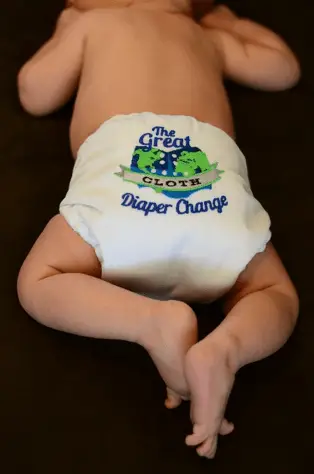
Image via Pixabay
You might want to skip changing a diaper at night so that you and your baby can get uninterrupted sleep. But this means that your baby’s skin will be in contact with wet urine all night long. This can be uncomfortable and cause diaper rash. The diaper rash causes the skin on the baby’s bottom to become red, itchy, and painful.
You should really change a nappy when you find that it is completely soaked or when your baby has soiled the nappy.
If you use a super-absorbent overnight diaper you won’t have to change the nappy at all during the night unless your baby wakes you with a completely soaked or soiled nappy.
Using a super-absorbent cloth nappy will ensure that you and your baby have a good night’s rest. You will have to buy them especially for night use as they are too expensive to use during the day.
How long can you leave a cloth diaper on?
Generally, standard diapers should be changed every two hours during the day. However with the special overnight ones mentioned above, you can sleep through the night
Conclusion
The dividing line between reusable and disposable nappies are becoming more indistinct. If you want to be kind to the environment but don’t have time to wash nappies every day, then biodegradable disposable nappies are a good choice for you if you can afford them.
As for the best nappies for night-time use, there are cloth diapers and disposable nappies that are equally up to the task. In the end it’s a personal choice, one that might be dictated by your pocket and what’s the best for your baby

